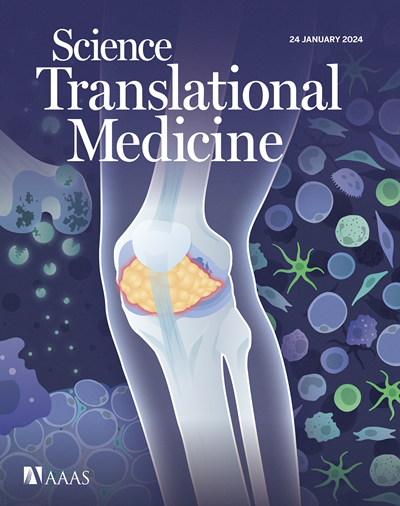The mRNA export pathway licenses viral mimicry response and antitumor immunity by actively exporting nuclear retroelement transcripts
IF 15.8
1区 医学
Q1 CELL BIOLOGY
引用次数: 0
Abstract
Nuclear retroelement transcripts (RTs), which can be elicited both transcriptionally and posttranscriptionally, form double-stranded RNA (dsRNA) in cytosol to trigger the viral mimicry response (VMR) and antitumor immunity. However, the strength of the induced VMR varies tremendously across tumor types, and the underlying mechanisms remain poorly understood. Here, we demonstrate that the mRNA export pathway modulates the VMR through actively exporting nuclear RTs for cytosolic dsRNA formation after their induction. Tumor cells hijack this process for immune evasion through aberrant coactivator-associated arginine methyltransferase 1 (CARM1) expression. Mechanistically, we show that the cytoplasmic transportation of RTs by the mRNA export pathway is counteracted by the RNA exosome, which cleaves multiple transcripts within this pathway, including those encoding the essential DExD-box helicase 39A (DDX39A) and the adaptor protein ALYREF. CARM1 enhances the RNA exosome activity to attenuate the nuclear export of RTs by the mRNA export pathway through two synergistic mechanisms: (i) transcriptionally activating several RNA exosome components and (ii) posttranslationally methylating arginine 6 of the RNA exosome subunit EXOSC1, which protects it from proteasome-mediated degradation. Collectively, our study highlights the critical active regulatory role of the mRNA export pathway in transporting nuclear RTs into the cytosol for triggering the VMR and tumor immunity. Furthermore, we propose that enhancing the mRNA export pathway activity, either through CARM1 inhibition or RNA exosome modulation, could reinforce the therapeutic agent-induced VMR, thus holding the promise for overcoming tumor immune evasion and immunotherapy resistance.

求助全文
约1分钟内获得全文
求助全文
来源期刊

Science Translational Medicine
CELL BIOLOGY-MEDICINE, RESEARCH & EXPERIMENTAL
CiteScore
26.70
自引率
1.20%
发文量
309
审稿时长
1.7 months
期刊介绍:
Science Translational Medicine is an online journal that focuses on publishing research at the intersection of science, engineering, and medicine. The goal of the journal is to promote human health by providing a platform for researchers from various disciplines to communicate their latest advancements in biomedical, translational, and clinical research.
The journal aims to address the slow translation of scientific knowledge into effective treatments and health measures. It publishes articles that fill the knowledge gaps between preclinical research and medical applications, with a focus on accelerating the translation of knowledge into new ways of preventing, diagnosing, and treating human diseases.
The scope of Science Translational Medicine includes various areas such as cardiovascular disease, immunology/vaccines, metabolism/diabetes/obesity, neuroscience/neurology/psychiatry, cancer, infectious diseases, policy, behavior, bioengineering, chemical genomics/drug discovery, imaging, applied physical sciences, medical nanotechnology, drug delivery, biomarkers, gene therapy/regenerative medicine, toxicology and pharmacokinetics, data mining, cell culture, animal and human studies, medical informatics, and other interdisciplinary approaches to medicine.
The target audience of the journal includes researchers and management in academia, government, and the biotechnology and pharmaceutical industries. It is also relevant to physician scientists, regulators, policy makers, investors, business developers, and funding agencies.
 求助内容:
求助内容: 应助结果提醒方式:
应助结果提醒方式:


